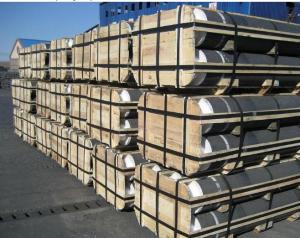When you think of the word ‘graphite’, what comes to mind? Pencil lead? Well, graphite is much more than that. It’s a crucial component in the production of steel, and the demand for it is ever-growing. But what about the prices of graphite electrodes? That’s a topic that’s been on the minds of many in the steel industry. Let’s dive into the fascinating world of graphite electrode pricing and explore the factors that influence them, as well as what the future might hold for this essential material.
First things first, what exactly are graphite electrodes? They are essentially long, cylindrical rods made from high-purity graphite. These rods are used in electric arc furnaces to produce steel. The process is quite simple: the electrodes are consumed in the furnace, emitting heat and helping to melt the scrap metal, which is then transformed into steel. It’s a process that’s been around for a while, but it’s still incredibly important to the steel industry today.
Now, let’s talk about the factors that influence the prices of graphite electrodes. The first and most obvious factor is the supply and demand. As the global economy grows, so does the demand for steel, which in turn drives up the demand for graphite electrodes. When there’s more demand than supply, prices tend to rise. Conversely, when there’s an oversupply, prices can fall. It’s a basic economic principle that applies to graphite electrodes just as it does to any other commodity.
Another factor that plays a significant role in graphite electrode pricing is the quality of the graphite. High-purity graphite is more expensive than lower-purity grades, and for good reason. High-purity graphite has better electrical conductivity and thermal shock resistance, making it ideal for use in electric arc furnaces. This means that manufacturers are willing to pay a premium for high-purity graphite electrodes, which in turn drives up the market price.
The production process of graphite electrodes also has an impact on their prices. The process is complex and requires a significant amount of energy, which can be costly. As a result, any fluctuations in energy prices can directly affect the cost of producing graphite electrodes. Additionally, the production process involves several steps, including calcining, impregnation, and baking, each of which can add to the overall cost.
Now, let’s talk about the raw materials used in the production of graphite electrodes. The primary raw material is needle coke, which is derived from petroleum. As with any commodity, the price of needle coke can fluctuate based on various factors, such as geopolitical events, changes in oil prices, and even natural disasters. These fluctuations can have a direct impact on the cost of producing graphite electrodes.
Another factor to consider is the environmental regulations in the countries where graphite electrodes are produced. Stricter regulations can lead to higher production costs, which can then be passed on to the consumers in the form of higher prices. This is especially true in countries with a strong focus on environmental protection, where the cost of compliance can be quite high.
But what about the future? What can we expect in terms of graphite electrode prices? Well, it’s a bit of a mixed bag. On one hand, we can expect the demand for graphite electrodes to continue to grow as the global economy expands and the demand for steel increases. This could lead to higher prices as the market struggles to keep up with the demand.
On the other hand, advancements in technology and production methods could help to lower the cost of producing graphite electrodes. For example, new methods of producing needle coke or more efficient ways of manufacturing graphite electrodes could reduce the overall cost and make them more affordable.
Additionally, the development of alternative materials or technologies that can replace graphite electrodes in the steel production process could also have an impact on their prices. If a more cost-effective alternative is discovered, it could lead to a decrease in demand for graphite electrodes, which would then affect their prices.
In conclusion, the world of graphite electrode prices is a complex and ever-changing landscape. It’s influenced by a variety of factors, including supply and demand, the quality of the graphite, production processes, raw materials, and environmental regulations. As we look to the future, it’s clear that the demand for graphite electrodes will continue to grow, but the exact trajectory of their prices remains uncertain. It’s a fascinating topic that’s worth keeping an eye on for anyone involved in the steel industry or the production of graphite electrodes.

